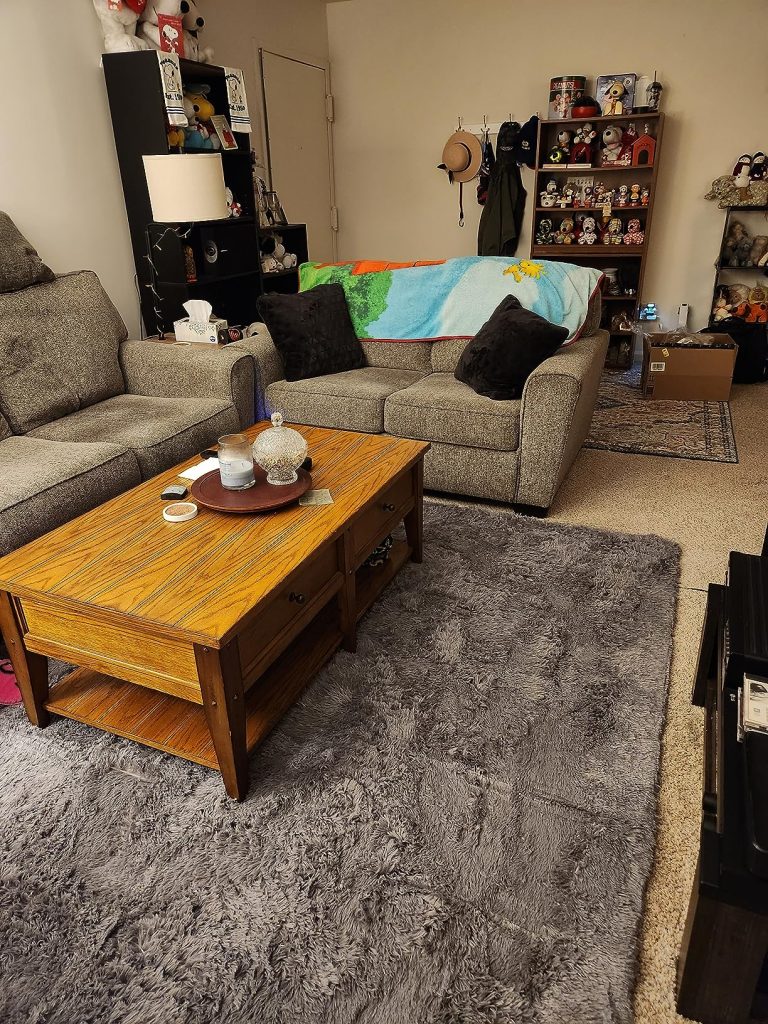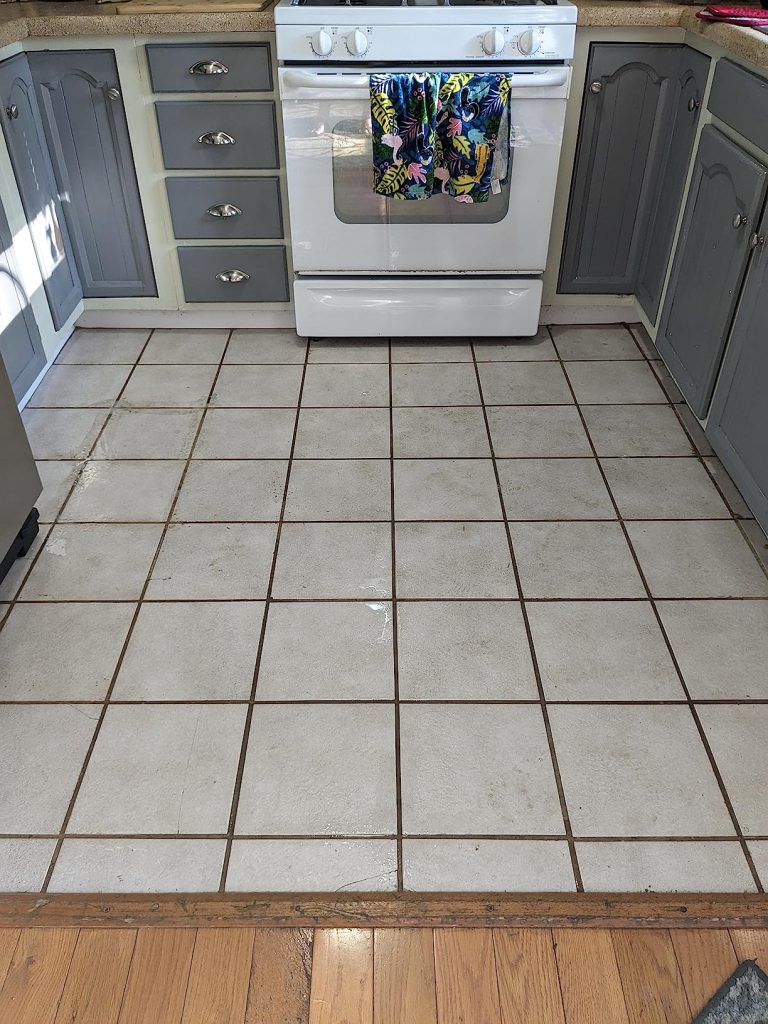Think about this: You’ve spent the entire weekend cleaning your house. You vacuumed, mopped, dusted, and organized. Yet, as you sit back to relax, you can’t help but notice your home still looks, well, dirty. How can this be? It’s a frustration many of us face, and often the reasons are more subtle than just needing to clean more. Understanding these hidden culprits can make a world of difference in how clean your home actually looks and feels.

Maintaining a clean home goes beyond the obvious tasks. It’s about recognizing the little details that contribute to the overall appearance and feeling of cleanliness. Whether it’s the clutter that sneaks up on you, the dust that seems to reappear overnight, or the stubborn stains that refuse to budge, there are numerous factors that can make your home look dirtier than it is. Let’s delve into the 10 reasons your home might still look dirty and, more importantly, how you can address them effectively.
1: Clutter Everywhere

Clutter is one of the biggest culprits when it comes to a home looking dirty. Even if every surface is spotless, a cluttered space can still feel chaotic and unclean. Clutter accumulates when items don’t have a designated place, leading to piles of miscellaneous objects that detract from the overall tidiness.
Examples:
- Living Rooms: Magazines, remote controls, and toys scattered about.
- Kitchens: Countertops filled with appliances, mail, and utensils.
- Bedrooms: Clothes piled on chairs, nightstands overloaded with books and gadgets.
Solutions:
- Decluttering Sessions: Regularly set aside time to declutter each room. This doesn’t have to be a massive undertaking; even 15 minutes can make a significant difference.
- Designate Spaces: Ensure every item has a designated place. Use baskets, bins, and organizers to keep things tidy.
- Adopt the “One In, One Out” Rule: For every new item you bring into your home, consider getting rid of an old one.
2: Dust and Dirt Build-Up

Dust is relentless. It settles on surfaces, in corners, and on items you rarely move. A dusty home can look dirty even if it’s otherwise clean.
Examples:
- High-Traffic Areas: Entryways, hallways, and living spaces where people often walk through.
- Forgotten Spaces: Ceiling fans, baseboards, and the tops of cabinets are often overlooked but collect a lot of dust.
Solutions:
- Regular Dusting: Make dusting a weekly routine. Use microfiber cloths, which are more effective at trapping dust than traditional dusters.
- Vacuum Attachments: Use vacuum attachments to clean hard-to-reach places like baseboards and ceiling fans.
- Air Purifiers: Consider using air purifiers to reduce the amount of dust in your home.
3: Smudged Windows and Mirrors

Windows and mirrors are focal points in any room, and smudges or streaks on them can make your home look less clean than it is.
Examples:
- Windows: Fingerprints, water spots, and general grime can accumulate quickly, especially in high-touch areas.
- Mirrors: Bathroom mirrors, in particular, are prone to splashes and smudges.
Solutions:
- Proper Cleaning Techniques: Use a mixture of vinegar and water for a streak-free shine. Spray the solution onto the surface and wipe with a microfiber cloth.
- Regular Cleaning Schedule: Make window and mirror cleaning part of your regular routine, especially in high-use areas.
4: Stains on Carpets and Upholstery

Stains are a visual indicator of dirt and can make an otherwise clean room look dirty. Whether it’s from food, drinks, or daily wear and tear, stains need to be addressed promptly.
Examples:
- Living Room Sofas: Spills from drinks or food can leave noticeable marks.
- Dining Room Chairs: Stains from meals can accumulate over time.
- Area Rugs: High-traffic areas can show signs of dirt and spills.
Solutions:
- Immediate Stain Removal: Treat stains as soon as they occur. Blot, don’t rub, the stain with a clean cloth and use a suitable cleaner for the fabric type.
- Regular Deep Cleaning: Schedule regular deep cleanings for carpets and upholstery to keep them looking fresh. Renting a steam cleaner or hiring professionals can make a big difference.
- Protective Measures: Use slipcovers or area rugs in high-traffic areas to protect your upholstery and flooring.
5: Unkempt Floors

Floors bear the brunt of daily life. Whether it’s dust, dirt, or spills, unkempt floors can make your entire home look dirty.
Examples:
- Hardwood: Dust and debris can accumulate, scratching the surface.
- Tile: Grout lines can become stained and dirty.
- Laminate: Spills can leave streaks and marks.
Solutions:
- Daily Sweeping: Make sweeping or vacuuming a daily habit, especially in high-traffic areas.
- Mopping Schedule: Mop your floors weekly to keep them clean and shiny. Use the appropriate cleaner for your floor type.
- Entryway Mats: Place mats at all entrances to catch dirt and debris before it enters your home.
6: Grimy Kitchen Appliances

Kitchens are the heart of the home, but they’re also a hot spot for grime and grease, which can make the entire space feel dirty.
Examples:
- Ovens: Spills and splatters can build up over time, leaving a burnt-on mess.
- Microwaves: Food splatters can create a sticky, smelly interior.
- Refrigerators: Spills and expired food can create unpleasant odors and grime.
Solutions:
- Regular Maintenance: Wipe down appliances after each use to prevent build-up. For ovens, consider using a self-cleaning function or oven cleaner for tougher stains.
- Deep Clean: Regularly deep clean your appliances. For microwaves, a simple solution of vinegar and water heated inside can loosen grime. Clean refrigerator shelves and drawers every few months.
- Keep it Fresh: Use baking soda in the refrigerator to absorb odors and keep it smelling fresh.
7: Dirty Bathrooms

Bathrooms are one of the most critical areas to keep clean, yet they are often one of the dirtiest.
Examples:
- Soap Scum: Builds up on shower doors, tiles, and tubs, leaving a cloudy, dirty appearance.
- Mold and Mildew: Moist environments are perfect breeding grounds for mold and mildew, especially in showers and sinks.
- Toilets and Sinks: Stains and mineral deposits can make these fixtures look dirty.
Solutions:
- Effective Cleaning Routines: Use products designed to tackle soap scum and hard water stains. Regularly clean all surfaces to prevent build-up.
- Proper Ventilation: Ensure your bathroom is well-ventilated to prevent mold and mildew. Use exhaust fans or open windows to reduce moisture.
- Product Recommendations: Use daily shower sprays to minimize soap scum and mildew. A mixture of bleach and water can effectively kill mold spores.
8: Neglected Corners and Crevices

It’s easy to overlook corners and crevices, but neglecting these areas can make your home look dirty.
Examples:
- Behind Furniture: Dust and dirt accumulate behind and under large furniture pieces.
- Under Beds: Often forgotten, these areas can collect dust bunnies and lost items.
- Closets: Cluttered, dusty closets can spill over into your living spaces.
Solutions:
- Comprehensive Cleaning Strategies: Move furniture periodically to clean behind and underneath. Use vacuum attachments to reach tight spaces.
- Regular Rotation: Rotate items in closets to ensure they stay clean and organized. Use storage solutions to keep everything in its place.
- Tools for Hard-to-Reach Places: Invest in tools designed for cleaning hard-to-reach areas, like extendable dusters and narrow vacuum attachments.
9: Pet Hair and Odors

Pets bring joy to our lives, but they also bring hair and odors, which can make your home look and smell dirty.
Examples:
- Hair on Furniture: Pet hair clings to sofas, chairs, and carpets.
- Lingering Pet Smells: Pet odors can permeate your home, especially in areas where they sleep and play.
Solutions:
- Regular Grooming: Brush your pets regularly to reduce shedding. Consider professional grooming for a thorough clean.
- Frequent Vacuuming: Use a vacuum designed to pick up pet hair and dander. Vacuum furniture and floors regularly.
- Odor Neutralizing Techniques: Use baking soda on carpets and upholstery to neutralize odors. Wash pet bedding frequently.
10: Ineffective Cleaning Products and Tools

The tools and products you use can significantly impact the cleanliness of your home. Using the wrong ones can leave surfaces looking streaky or still dirty.
Examples:
- Wrong Cleaner for Surfaces: Using a general cleaner on a surface that requires a specific type of cleaner.
- Low-Quality Tools: Ineffective vacuum cleaners or old, worn-out mops and cloths.
Solutions:
- Invest in Quality Products: Spend a bit more on high-quality cleaning products and tools. They often work better and last longer.
- Read Labels and Instructions: Ensure you’re using the right product for each surface. Follow the instructions for the best results.
- Regularly Replace Tools: Replace cleaning tools like sponges, cloths, and mop heads regularly to ensure they remain effective.
Conclusion
Keeping your home looking clean is about more than just regular cleaning; it’s about paying attention to the details that often go unnoticed. By addressing these 10 reasons your home might still look dirty, you can create a space that not only looks clean but feels clean. Implement these tips and solutions to maintain a tidy, welcoming home that you can be proud of.
Remember, a clean home is a process, not a one-time event. Regular maintenance and attention to these often-overlooked areas will help keep your home looking its best. So, take a step back, assess your space, and tackle those trouble spots. Your home will thank you, and you’ll enjoy the peace and satisfaction that comes with a truly clean environment.
